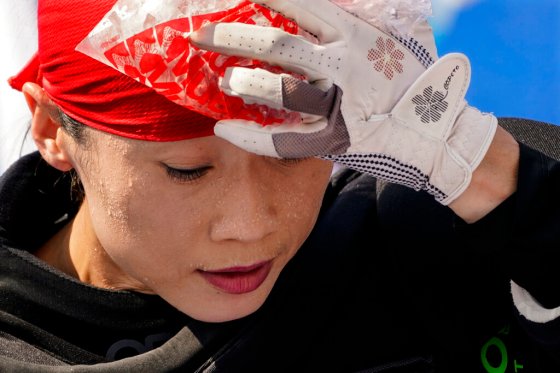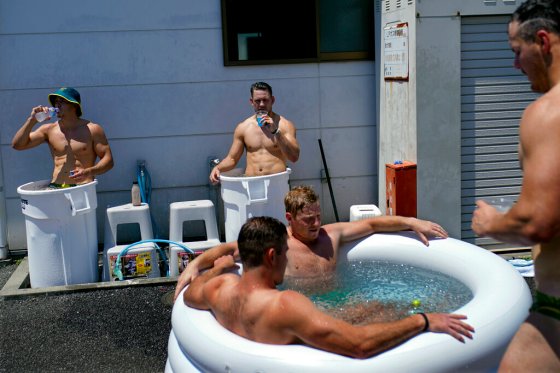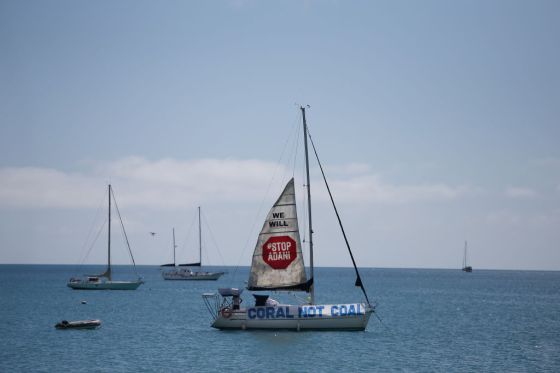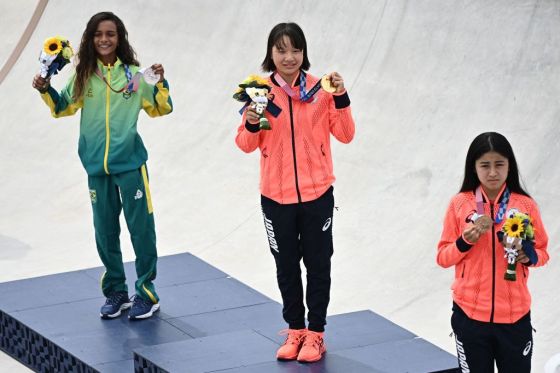In recent years, Tunisia has become a victim of its own reputation. In the decade since its landmark 2011 revolution, its characterization as “the only democratic success story of the Arab Spring” has hung around the country’s neck like an albatross.
While observers have routinely celebrated its “democratic transition” they overlooked a parliament that regularly descended into chaos and a flailing economy. Into this mix, factor in the worst of the COVID-19 pandemic and the government’s catastrophic response to it, and an event like the one that occurred Sunday—when President Kais Saied suspended the country’s legislature and dismissed unpopular Prime Minister Hichem Mechichi—becomes almost inevitable.
[time-brightcove not-tgx=”true”]
Few saw Saied’s intervention coming. Nevertheless, late on Sunday evening, following what had at times been violent demonstrations across the country, with protesters calling for the dissolution of parliament and early elections, among other things, the President acted.
Quoting Article 80 of the Constitution, he suspended the parliament for 30 days and removed its members’ immunity from prosecution. While the legality of this move remains the source of fierce debate, his seriousness was never open to doubt. “I warn any who think of resorting to weapons… and whoever shoots a bullet,” he said, “the armed forces will respond with bullets.”
Why the President felt he had to act
The desire for change in Tunisia has been brewing. Under the rule of the last ten governments to oversee Tunisia during the past decade, a political class has risen that is seen as entirely unmoored to the sometimes brutal reality of daily Tunisian life. Last year, as a government survey found that one-third of households feared they would run out of food, Tunisia’s politicians considered abolishing bread subsidies. Through riots over unemployment, economic desperation, hunger and police brutality, Tunisia’s politicians and government ignored the struggles of a desperate country and concentrated on political theatrics and positioning.
There was nothing contrived about the celebrations that greeted the news of the President’s intervention. In Tunis, excited crowds debated the news, while simultaneously trying to define exactly what it meant. Still, the enthusiasm has held in the days since. On the streets of Intilaka, a working class neighbourhood near Tunis that has frequently hosted clashes between the police and angry youths, residents on Tuesday applauded the President’s intervention. Some looked forward to the speedy reinstatement of a reformed institution, others were happy to be ruled by what they saw as the benevolent dictator of the presidential palace at Carthage.
Boubaker Guesmi, a 56-year-old local, shares this view. Unemployed for more than a decade, his only income was the 180 dinars ($64.50) he received from the state each month. From this and his wife’s part-time income, the couple have to feed and clothe themselves and their three daughters. He says he has few misgivings about the President’s intervention or fears of a return to the autocratic days of ousted President Zine El Abidine Ben Ali and his kleptocratic government, “I don’t think Kais Saied will be another Ben Ali. He’s clean, [not corrupt],” he said through a translator. As for a theoretical future free from parliament, Guesmi approves of the idea. “Now if I ask for something from the government, I know that they will answer,” he says. Saied has said that he would assume executive authority with the assistance of a new prime minister.
Concerns about corruption remain a source of frustration for many Tunisians in Intilaka. “All politicians are corrupt,” one young man said. That perception does not seem to extend to Saied, though, who remains extremely popular. According to a poll conducted by Emrhod Consulting, published on Wednesday night, 87% of the 900 Tunisians surveyed supported the President. Only 3% opposed him. His popularity isn’t newfound. In the second round run-offs of 2019’s presidential election, the former law professor and political novice registered a tally just shy of the total number of votes cast for parliament, in which the self-styled “Muslim Democrats” Ennahda emerged as the largest party. His star may have dimmed a little since then but, by contrast, the parliament’s star has plummeted.
A coup or ‘the will of the people’?
In the days since the President’s intervention, the online debate over what it signifies rages on. In the absence of firm evidence one way or another, his detractors call Saied’s move a coup and have branded his backers putschists and anti-democratic, accusing them of being on the payroll of France, the UAE and Egypt. Saied’s supporters claim their critics are Islamists, arguing instead that the President has acted upon the will of “the people.”
It’s true that the resistance to Saied’s intervention has been led by Ennahda, the Islamist party. However, not all critics of the President’s intervention are Islamists. Such accusations are also unlikely to endear the President and his supporters to Tunisia’s international backers, such as the E.U. and U.S., which he desperately needs to keep on side. Nevertheless, labelling all critics of the President as Islamists remains a useful tool.
For many in contemporary Tunisia, to call an opponent an Islamist is to question their integrity and malign their motives. For Ennahda, an exemplar of the Islamist philosophy in Tunisia, it has been a steep fall since the giddy peaks of 2011. Over the last ten years, Ennahda has maintained a presence in nearly all of Tunisia’s ten governments of various stripes. In doing so, it has found itself partnered with some unlikely bedfellows, profoundly undermining both Ennahda’s credibility and that of its political partners.
Perceptions that Ennahda is out of touch with the everyday struggles of many Tunisians helped fuel protests on Sunday and led to many of the party’s offices being vandalised. “They’re just out for themselves,” says 33-year-old Mohamed Ali from the border town of Ben Guerdane. “It’s not just about politics, it’s about jobs,” he says, referring to the perception that regional Ennahda officials distribute jobs to party members ahead of the local populace.
Public disenchantment with Ennahda has made it easy for rivals to scapegoat them, even when they themselves are as much to blame for disrupting the function of parliament. Abir Moussi, the leader of the Parti Destourien Libre (PDL), which was founded by members of the ruling party pre-revolution, is one lawmaker who has been quick to blame Ennahda and their more extreme Islamist allies, Al Karama, for disruptions they now deny having caused. Moussi herself was the victim of a horrific violent assault by an Islamist Deputy associated with Al Karama.
She has also arguably done more to disrupt parliamentary order than any other politician. In the past, her stunts have included turning up parliament in a bullet proof vest and crash helmet, calling out opposition deputies with a megaphone and staging numerous sit-ins to protest the Islamists’ presence in the chamber. She was quick to voice support for the President, posting a video 24 hours after Saied’s intervention wishing him the best in “realizing the aspirations of the citizens and restoring the foundations of the State.”
Democracy in Tunisia is still at risk
If Saied is to maintain the moral high ground in Tunisia, it will be important that he doesn’t circumvent the political process for too long. He has said parliament’s suspension is temporary. His own mandate is a democratic one and therefore no more or less legitimate than parliament’s—and no matter how problematic a parliament is, it’s best dismissed with ballots, not threats of bullets. An intervention like Saied’s puts Tunisia’s democracy at acute risk. But for now, Tunisia’s politically aware and hugely invested civil society groups have not raised the alarm, instead holding their counsel and watching events closely.
However, if Saied deviates from his constitutionally couched assurances on Sunday night, he risks jeopardizing not only the vital support he needs from the hugely influential Tunisian trade union, the UGTT, but also the country’s international backers.
Secretary of State Antony Blinken spoke with the President on Monday and “encouraged President Saied to adhere to the principles of democracy and human rights that are the basis of governance in Tunisia,” his office said in a statement. Other prominent voices in the U.S. were more critical. Writing in the Washington Post, Republican Senator Lindsey Graham called for the U.S. and its allies to go “all in” on Tunisia, including being “on the ground.” On social media, Connecticut Democratic senator Chris Murphy questioned the role that the United Arab Emirates and Saudi Arabia may be playing in Tunisia. Within Washington’s thinktanks, the response was no less furious. Shadi Hamid, a senior fellow at the nonpartisan Brookings Institution’s Center for Middle East Policy called for the suspension of all U.S. aid to Tunisia. To many within Tunisia, the response from the international community appears bizarre. On social media, accusations of colonialism dominated the discourse.
Despite the concerns among foreign onlookers, democracy isn’t dead in Tunisia. But it is at risk. The next 30 days will prove crucial to the path the country takes. If a roadmap out of the current mess isn’t drawn up by then, the country risks a parliament being restored that holds its citizens in contempt, setting the country up for a period of instability few wish to see again.




